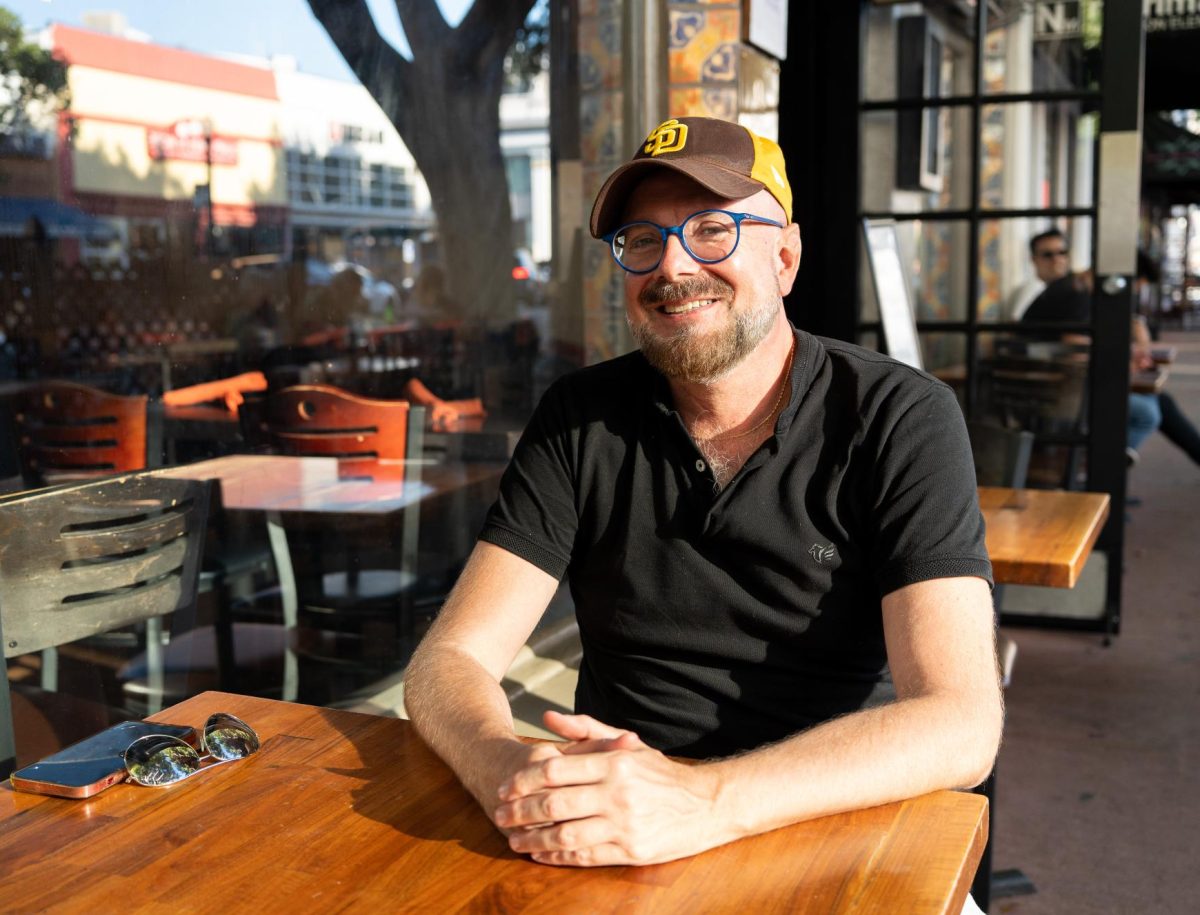Despite his circumstances, Jake Adams, prisoner H865983 of
the Montford unit of the Texas Department of Criminal Justice, has found a
glimmer of hope in the Books for Prisoners program run by UCSD student
volunteers and facilitated by Groundwork Books. In a letter to program
volunteers,
time, help and understandin’ in offerin’
a program like this to us who are locked up.”
letter, just one of thousands tucked away in the back room of Groundwork Books
from prisoners nationwide, echoes a collective interest in pursuing in-prison
education that students are addressing.
Books for Prisoners, launched in 2001, was once an official,
fully funded sector of Groundwork Books. This branch took on the sole
responsibility of organizing and publicizing fundraisers and parties as well as
soliciting book and monetary donations. According to
senior and Groundwork staff member Adriana Goni, Groundwork Books cut funding
for the program because of the difficulties it has had sustaining itself
against corporate competitors.
With more than three times as many blacks living in prison
cells than in college dorms according to 2006 U.S. Census data, however,
dedicated volunteers like Thurgood Marshall College senior Brian Orozco have
found it necessary to breathe new life into this financially limited program.
“[In the past couple of years,] we’ve had to dedicate a
whole lot of time and energy to staying alive,” Goni said. “The problem still
exists, though. There’s still a prison complex that profits off of slave labor
and there’s a crazy disproportionate amount of poor people of color in prison.”
One of the program’s main objectives has been to help
prisoners combat this “prisoner industrial complex” by providing them with the
tools needed to educate themselves. The complex, an allusion to the term
“military-industrial complex” coined by former president Dwight D. Eisenhower,
refers to the growing profitability of the prison industry — headed by the
various vendors who do business with correctional institutions. This drive for
profit is blamed for the shift in priorities away from rehabilitation and
prisoner education programs.
According to Goni, this mechanism is intended to keep
prisoners uneducated — roughly 70 percent of
prisoners are illiterate.
Groundwork Books provides prisoners with a book list from
which they can choose two books completely free of charge. Because Books for
Prisoners relies heavily on book donations from students, the types of books
sent to prisoners vary. Usually, genres include race theory, cultural history,
political economy and instructional materials. Receiving roughly 10-20 letters
requesting books per week, mostly from prisons in the southwest, the most
requested book is the dictionary. Orozco does not find this surprising given a
prison’s lack of educational environment.
“That’s why this program exists. The educational
opportunities in prison are dismal at best,” Orozco said. “Some of them offer
classes, but you have to pay for [them] and you have to pay for your own
books.”
Although the role of Groundwork Books in the Books for
Prisoners program has been reduced from all-encompassing involvement to merely
providing shipping resources, the store still conducts a fundraiser at the
beginning of each quarter called “Rounding up Change.” Staff members encourage
students to either donate their loose change or round their purchases up to the
nearest whole dollar. Further fundraising and advertising for the program has
fallen on a group of 10 eager volunteers, headed by Orozco.
Orozco’s involvement in the cause happened by chance. After
wandering into Groundwork Books his eyes stumbled on a piece of artwork of
several sketches of Chicano imagery. After inquiring about the artwork, staff
members brought Orozco into the back room and showed him the thousands of
prisoner letters, informing him of the program they used to have. From that day
forward, Orozco took on the daunting task of reinstating the program and
generating enough funds to cover the cost of shipping.
“The thing that kills me most is the educational
opportunities in prison and I really want to do something about it,” Orozco
said. “Although [these prisoners] have committed a crime, society takes a lot
out of them, too, without giving them any resources to excel once they’re out.”
Since last February, Orozco has organized and orchestrated
two prisoner art shows — the most recent this past April. For the show, Orozco
solicited artwork and biographical information from over 50 prisoners and 10
UCSD students. Some artwork, intricate patterns done in dark ink and bright
colors, looked the part of professional creations. Others, demonstrating the
lack of artistic resources at some prisons, were sketched onto the very
envelopes used to send book requests. The body of work also included woodwork
and hand-crafted jewelry — like the hand-dyed, rope crucifix that Orozco wears
around his neck, a gift from prisoner Douglas Durham.
A former inmate, a prisoner of five different prisons
throughout
York
show to answer questions and draw portraits. With attendance surpassing 200,
Orozco raised $1,600 for the Books for Prisoners program.
“The best part of the artwork is that you get to see prison
through their eyes. You really get to see them for who they really are —
people,” Orozco said. “I’m not going to lie, when I thought of prisoners before
this, I thought of all of those negative stereotypes. Then, you start reading
their letters and seeing their artwork and you realize that these are real
people with skills.”
Removing the social stigma attached to prisoners is another
motive for continuing the program, Orozco said. As a resident advisor for
last fall that taught his residents about life behind bars and simultaneously
took advantage of their packaging manpower. Orozco shared the personal
correspondence he maintains with three prisoners in particular — Willy Jones in
in
Despite the shocking tales of prison rape and gang rivalries, most prisoners’
primary desire is to have the opportunity to walk away with something after
serving their terms.
“The biggest thing for [my residents] was that they’re
students and [are] forced to read books, but these guys genuinely want to read,
they’re dying to read, they need these books,” Orozco said.
The group of 20 residents ultimately wrapped 189 packages
for the Books for Prisoners program with a small budget from
RAs from
and
program for their residents to benefit Books for Prisoners.
Due to the success of the art shows and RA programs, Orozco,
who graduates this year, said he hopes to leave Groundwork Books with an
official university club fully equipped with volunteers as dedicated to
inmate-education awareness as he is.
“I’d like to think that every book [we] send gives a
prisoner the opportunity to make something of himself and to get out of that
hole,” Orozco said. “It’s a hole made to keep people there and [we] just want
to give them the rope to get them out.”







